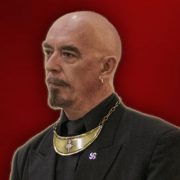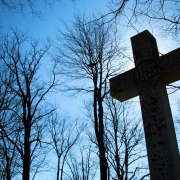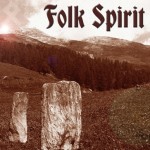Traces of the Odinic in the “God” of Beowulf
Traces of the Odinic in the “God” of Beowulf
By Jim S. AOR
The heritage of our folk is under attack in many ways, and literature has become one significant battlefield on which it is threatened. Many academics minimize the history of certain terms found in Beowulf. Many translators use their poetic licenses to dilute the Odinic meanings of these same terms. This is a travesty, particularly for our children. They should know a little something about this tale in its original language, which is today often called “Old English.” That doesn’t require a degree in Old English literature, only some basic knowledge of a few Old English words. These words, found in the original language of Beowulf, are god, wyrd, metod, wealdend, drihten, and lif-frea. By learning this small set of words, we can see in many ways the presence of pre-Christian deities in Beowulf. Beowulf in turn can be used to teach our children about their living heritage.
Dual Faith
We must remember that the version of Beowulf to which we have access was written during a period of “dual faith” in England. Recorded in West Saxon in what is now called the Cotton Vitellius A. xv manuscript, the Beowulf story we have dates to some time between 521 and 1026 CE (Slade 2009). During this period, the church still needed to assimilate with the indigenous cultures existing in this area because they found they could not dominate by brute force alone. Documentation in other manuscripts indicates that Odinic practices continued during this window of time in England. One notable example is the practice of King Raedwald, who “set up altars to Christ and to the devil side by side” after his conversion to Christianity and before his death circa 625 CE (Mitchell 1995). It is also important to note that charms referring to gods such as Woden and Erce were recorded by monks during this same period. Karen Louise Jolly offers excellent examples of such attempts at cultural assimilation in Popular Religion in Late Anglo-Saxon England- Elf Charms in Context (1996). A more general overview of the long and arduous process by which the church infiltrated Germanic cultures can be found in James C. Russell’s The Germanization of Early Medieval Christianity (1994).
“God”
“God” is itself a pre-Christian Germanic word. No terms for the Christian god found in Beowulf originate from Latin or Hebrew. They are actually all Germanic in origin. The term “god” is perhaps the greatest example of this, since it was most likely originally a term for any god or goddess rather than one in particular. We find this in the Old English “god” and the Old High German “got” (Robinson 1992). Such words have a common precursor, but exactly what that precursor might be is still open for debate. The common thread in this debate about how the word “god” originated, however, is it was Northern Indo-European. This means that the term “god” comes out of a polytheistic culture. As Roman Christians moved among Germanic peoples, they used the term “god” for a single deity.
“Wyrd”
Another term referring to the Christian god that is more noticeably Odinic is “wyrd.” This term was undergoing a change in meaning during the time that Beowulf was transcribed. In one kind of usage, “wyrd” came to mean simply “an event that has occurred” rather than a spiritual force, as in the term “gewyrth” and “weorthan” (Mitchell). It would be absurd, however, to say that all pre-Christian connotations had been removed, considering the era of “dual faith” in which the Anglo-Saxons still lived. We can see the original meaning of “wyrd” still implemented in Beowulf. In other words, the term appears to refer to the cosmic force that dooms or develops an individual: “Wyrd oft nereth Unfaegne eorl thonne his ellen theah!” (“Wyrd often skirts An undoomed earl when his courage stands”) “Wyrd” still refers to pre-Christian decrees.
“Metod”
Another term used in Beowulf refers to fate as Odinists might understand it: “metod.” Often this word is simply translated as “God” and remains severely unexamined. “Metod” appears to derive from the Old English “ge-met” and relates to the Old High German “mezan,” both meaning “to measure.” One can also see the word’s resemblance to “meter” and “metric.” Consider G. Ronald Murphy’s translation from the Saxon Heliand gospel of the ninth century: “’That ni scal an is liba gio lides anbitan wines an is weroldi: so habed im wurdgiscapu, metod gimarkod endi maht godes.’ “That never in his life will he drink cider or wine in this world: this is the way Fate made him, the Measurer marked him and the power of God [as well].” (Murphy 1989) We see in Murphy’s translation from this Germanized gospel that an entity (or entities) other than the Christian god still rations out, or measures, the length of one’s life and, in turn, one’s destiny. Traces of the Wyrd and the Anglo-Saxon concept of Fate therefore still existed in the writings of Anglo-Saxons at this time.
“Wealdend” and “Drihten”
The power of the lord also still exists during the time of Beowulf’s transcription as we know it. Words such as “wealdend” and, more frequently, “drihten” refer to the Christian god in Beowulf. Yet these same terms are just as often (if not more often) used to describe an Anglo-Saxon lord. The meanings of terms denoting “lord,” however, involve much more than mere legal authority and wealth. The lord in the Germanic world was a source of protection and security, but also of Luck. Tribal kings were often seen as having descended from gods because of their immense power and ability. In the Ynglingsaga, for instance, we find that King Fjolnir was recognized as the son of Frey. Furthermore, the aforementioned Saxon Heliand gospel drastically altered the image of Jesus as meek and defeated. The Heliand author depicts him as a lord to which the twelve disciples are bound as warriors. Thus Christ follows Germanic warrior ethic as explained by Tacitus: “When they go into battle, it is a disgrace for the chief to be surpassed in valour, a disgrace for his followers not to equal the valour of the chief. And it is an infamy and a reproach for life to have survived the chief, and returned from the field. To defend, to protect him, to ascribe one’s own brave deeds to his renown, is the height of loyalty. The chief fights for victory; his vassals fight for their chief.” (Halsall 2009) The church recognized the power of terms indicating lordship, for why else would they be so frequently used? The element of sacral kingship plays a part in many Anglo-Saxon works remaining in our possession. The Heliand gospel is but one example. One can look to the Dream of the Rood and the Anglo-Saxon Rune Charm for further traces of sacral kingship. The spiritual nature of the lord or king is Odinic at its root. These leaders were considered by our ancestors to be born of our indigenous gods, and so words meaning “lord” also point to the original gods of our people. “Drihten” is therefore a word with complex meaning that serves as a teaching moment. Many passages in Beowulf refer to the Judeo-Christian god and Jesus as warring leaders. William Chaney in The Cult of Kingship in Anglo-Saxon England recognizes how compelling such a term as “drihten” could be for the Anglo-Saxons. He examines the magical quality of the Anglo-Saxon king in detail, but also the prevalence of the term “drihten” in both legal documents and poetic works. For Chaney, this is further evidence of “the warping of Scripture” to create a “parallel between God and the king” (1970). “Wealdend” also becomes important because of its meaning of ”ruler.” Similarly, the Old Saxon “uualdan” appears to mean “rule,” and the Old Saxon “uualdand” appears to mean “mighty” (Robinson 1992). Recall the root “wal” in “Walhalla,” and connections become clearer. The “ruler” originally indicated by the term “wealdend,” as with “drihten,” has an ancient Northern Indo-European origin. It therefore connects a spiritual force to the tribal lord or king. An Anglo-Saxon term “al-Wealda” is often translated simply to “God” in modern translations, but with the history of the term in mind, we might glimpse the presence of the “All-Father.”
“Lif-frea”
One of the more recent and most impressive attempts at a complete translation of Beowulf has been Seamus Heaney’s, yet Heaney follows in the footsteps of his predecessors by using culturally deprived and overly Christian terms to translate Old English. Take lines 16 and 17 as an example: “…him thaes Lif-frea, Wuldres Wealdend, worold-are forgeaf.” Heaney translates this as follows: “…so the Lord of Life, The glorious Almighty, made this man renowned” (2000). Heaney uses the term “Lord” here, yet when the term “drihten” appears in his translation, the reader finds the word “God” for its modern translation. This “Lord of Life” is furthermore paired with “the glorious Almighty,” an even more tragic liberty taken that avoids the original meaning of “Wealdend” for the ancient Anglo-Saxon. An alternate translation of “Lif-frea” might be “life-giver,” yet that still does not allow us to fully consider the richness of this term. The Odinist reader, however, will ponder the word “frea,” as they will “Frean” in line 27 (another term Heaney translates to “Lord”). The gods in this way still remain in the language of our ancestors during the time of Beowulf.
The Lesson for our Folk
The Odinic spirit in Beowulf remains, despite invasions both physical and cultural. This story has been propagandized by a foreign power, but the monks who made use of it recognized the undying faith of our people. Otherwise, they would have had no need to distort the multitude of stories, poems, riddles and charms we know of in an attempt to win over the Anglo-Saxon. The very language of the tribes who settled in England had to be repackaged in such a way that they would even begin to consider the worth of the desert cult. Thus Beowulf stands as evidence not only of the period of “dual faith,” but also as a testament to the unconquerable Aryan folk soul.
I encourage you to use Beowulf as a tool for educating our children. Those with a vested interest in revising our history will do their job; we must do ours. The best way to teach the original meanings of the words mentioned above is by purchasing a “dual translation” of the tale. “Dual translation” means the original language and Modern English can be viewed side by side, so one can read with a contemporary translation with ease but refer to the original if interested. Read Beowulf in Modern English, but pause to consider with your children the meaning of words often translated simply as “God.” There is much more behind them than first meets the eye.
Print References
Anonymous. Beowulf. Seamus Heaney, translator. New York: WW Norton & Company, 2000. Chaney, William A. The Cult of Kingship in Anglo-Saxon England. Manchester University Press, 1970. Halsall, Paul. Internet Medieval Sourcebook. Tacitus: Germania. Jolly, Karen Louise. Religion in Late Anglo-Saxon England- Elf Charms in Context. Chapel Hill: University of North Carolina Press, 1996. Mitchell, Bruce. An Invitation to Anglo-Saxon England. Malden, MA: Blackwell Publishing, 1995. Murphy, G. Ronald. The Saxon Savior- The Germanic Transformation of the Gospel in the Ninth-Century Heliand. New York: Oxford University Press, 1989. Robinson, Orrin W. Old English and Its Closest Relatives. Stanford University Press, 1992. Russell, James C. The Germanization of Early Medieval Christianity- A Sociohistorical Approach to Religious Transformation. Oxford University Press, 1994. Slade, Benjamin. An Introduction to the Structure and Making of the Old English Poem Known as Beowulf.






Leave a Reply
Want to join the discussion?Feel free to contribute!